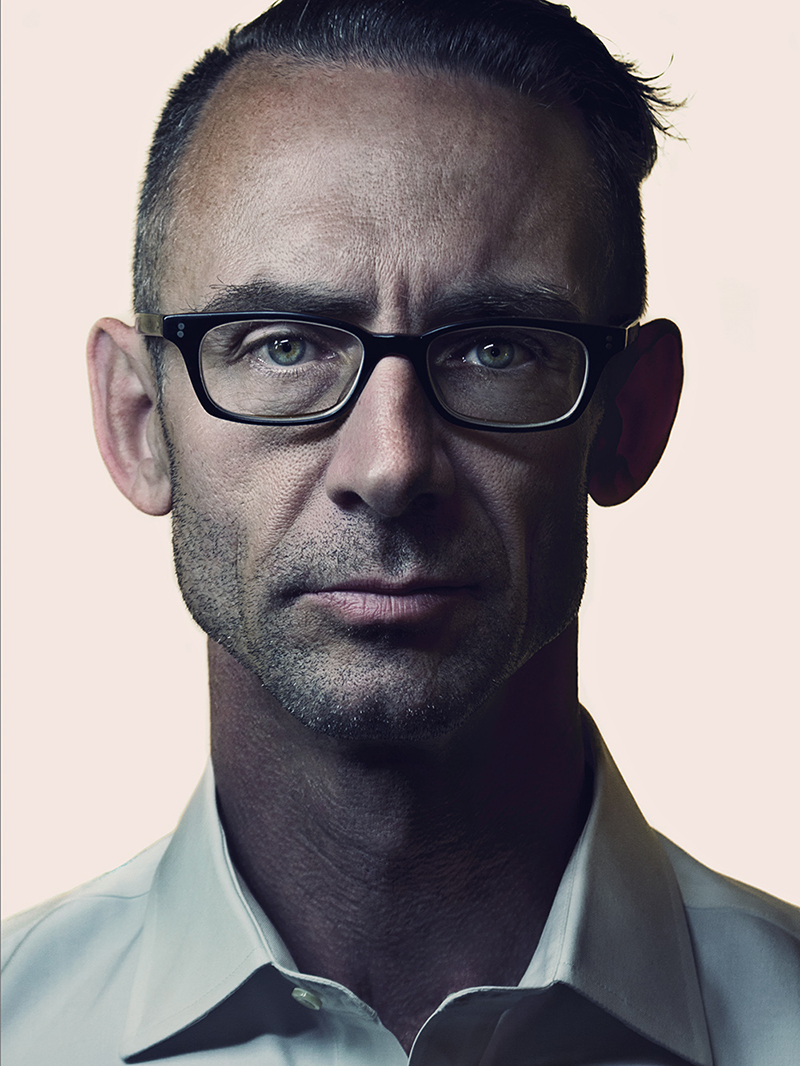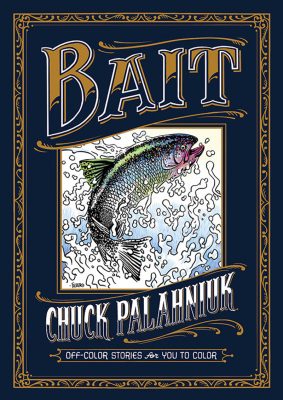
How Busy Can One Writer Be? A Conversation with Chuck Palahniuk about Bait and Other...
Art
Chuck Palahniuk has never put out a boring book. Each one—15 novels, two short story collections, two non-fiction collections, and a graphic novel—has its own grisly, satirically hued way of getting at what it means to be alive in this strange, modern and often alienating age. For an author whose books each have been an experiment and innovation, what could possibly come next? A coloring book, the likes of which could only Chuck could make. Featuring 10 artists and upwards of 50 “coloring opportunities,” Bait: Off-Color Stories for You to Color (Dark Horse Press) is equal parts humanizing and engaging, but still missing something … YOU!
SLUG: Thank you for speaking with us! What kinds of things have you done today?
Palahniuk: I drove into town [Portland, Oregon] and went to the gym, came out of the gym, and I’ve been sitting here [in my car]—I didn’t want to be on the road when you called. I’ve also been light editing the hard copy on the chapter for a book.
SLUG: Can you tell me anything about the book you are editing?
Palahniuk: I don’t really know yet. I don’t know if it’ll be a novel or if this might be a short story. But I think it’s going to be a novel—which wouldn’t [come out] for a few years yet.
SLUG: Talking about new books, Bait: Off-color Stories for You to Color is hitting shelves. Can you tell me a little about Bait?
Palahniuk: Number one: Bait is my project to maintain a working relationship with the artists who contributed to Fight Club 2 [my first graphic novel], and that I hope to do more projects with in the future. Every one of them did variant covers for the single issues, except for Alise [Gluškova]. Alise is kind of a new name; we wanted to include somebody who showed a lot of promise but was just starting out as an artist.
Also, Bait is kind of a perverted joke because it is such adult material presented in a children’s idiom [a coloring book]. It is an attempt to make short stories more marketable. People say that they love short stories, but publishers say that short stories just don’t make the profit that novels make. We thought that by combining short stories with a coloring book, we could draw both audiences and make short stories attractive to publishers.

SLUG: What other sorts of things inspired you to create this work?
Palahniuk: You know, people put such an enormous amount of time and effort into completing a coloring book, but the books themselves are so cheaply produced and cheaply bound that they hardly seem to justify all the effort that they require of a reader. I wanted to produce a book that was hardcover and really nicely bound and had good quality paper and was able to lie flat, so that it was easy to color without breaking the spine. I wanted to produce a book that would be worth keeping and that would be worth the amount of time that the readers put into coloring these things.
Also, so much of my readership is creative people, and they bring me their artwork at events. It just seemed like, if they are creative people who like to do things, why not provide them with something like this?
SLUG: Your works have always had an experimental flair. Can you tell me a little about mixing media and presentation, as you did with Fight Club 2 and now Bait?
Palahniuk: The aspect of it that I love the most is that it’s collaborative; it’s not just me sitting alone somewhere trying to create this thing. Fight Club 2 and Bait were dances back and forth with me and my comics editor, Scott Allie, and the artists, where everyone got to contribute ideas and everyone got to enable one another to do something more daring that any one of us would have done on our own. It’s that kind of enabling quality that I enjoyed most about this.
SLUG: How does presenting a work with mixed media—in Bait’s case, a coloring book—change, limit, or push the stories in ways that traditional writing or literature can’t?
Palahniuk: Sometimes the illustrations can carry a plot point, so that it doesn’t have to be presented in expository writing. For example, the ending plot point of “Bait” [the title story] was done by the artist and didn’t have to be presented in the text.
Another wonderful thing is that multi-media—having illustrations—frees the writer from having to write passive, descriptive text; you as the writer can really focus on the verbs of what is happening in the scene because you don’t have to describe what the room looks like or what the characters look like. The heavy lifting is done by the illustrator, and that allows the writer to really focus on the action.
SLUG: Do you think Bait will change the literary market as far as audience participation is concerned?
Palahniuk: Yes, ultimately, the finished book will not just represent my work or the illustrator’s work, but the work of the individual. Each and every book will be different and unique in its own way, and I think that is kind of remarkable.
And I would kind of hope [it’ll change the market], especially with short stories. Short stories are my favorite form, but there is an enormous resistance from publishers who feel that short stories aren’t profitable. Maybe if short stories have more illustrations like this, they’ll be more attractive to a larger number of readers and publishers will be looking for more short story writers.
SLUG: What kinds of things make the short story your favorite form?
Palahniuk: As a writer …
